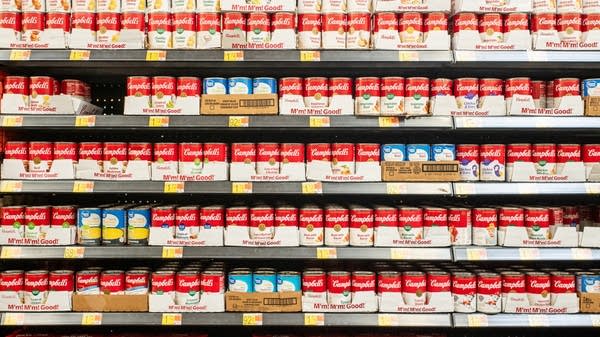The great diamond disruption: Lab-grown carbon copies rock the diamond market
It used to take the Earth 3 billion years, 2,000-degree temperatures, a little carbon and a lot of pressure to grow a diamond. Now, a new machine can do it in five days.

In Kerrville, Texas, a small town in the hill country, there’s a warehouse of machines that have changed everything for the diamond industry.
“These are our high pressure, high temperature diamond machines,” said Adelle Archer, CEO of Eterneva, a company that grows diamonds. The machines look like big refrigerators, with a waffle iron tucked into the middle. That waffle iron is where the diamonds grow.
Eterneva engineer Petrus Bothma developed the machines.
“We have the high temperature from the heaters between two steel plates and then we use hydraulics to apply pressure to the growth cell,” he explained.
In other words, this waffle iron acts as the pressure and heat of the Earth's tectonic plates applied over billions of years — the pressure and heat required to grow a diamond.
“Except we can grow it in days,” said Bothma. And Eterneva can grow a diamond in almost any size or color.

“That is scaring the hell out of the diamond industry,” said Edahn Golan, a diamond industry analyst based in Israel. “Did you ever see a kid riding a bicycle and then, all of a sudden, the front wheel starts wobbling? That's kind of what happened to the natural diamond industry.”
Lab-grown diamonds have been around since the 1950s, but for a long time they were kind of taboo — most jewelers wouldn't even sell them.
Enter the pandemic: Companies like Brilliant Earth and Blue Nile flooded social media with sleek ads. Consumers had lots of extra cash and wanted something flashy for their Zoom calls. Something like a pair of diamond earrings.
“Stud earrings was the real breakthrough for lab-grown,” said Golan. “The growth was astronomical.”
People realized they could buy lab-grown diamonds that were visually and molecularly identical to mined diamonds, but were a fraction of the price. For instance, a pair of 1 carat diamond earrings (that’s roughly the size of a pencil eraser) costs more than $3,000 dollars. But a lab-grown version only costs about $800.
Consumer demand skyrocketed and diamond lab startups began cropping up all over the world.
“Inventories just jumped,” said Golan. “We had this massive growth and that led to a massive decrease in prices.”
The market was flooded with diamonds and prices tanked. Right now, the price of lab-grown diamonds is more than 80% lower than it was in 2019 — barely above the cost of production. Many of those shiny start-ups have gone bankrupt.
Meanwhile, traditional mined diamonds have fared a little better. Prices are only down by about a third since 2020. But a lot of that is because companies like De Beers have the financial cushion to hold prices high, even if it means fewer sales, at least for now.
“This is kind of an inflection point for the diamond industry,” said Golan. After all, diamond mines are costly to run and mined diamonds can't really compete with lab-grown on size, clarity or price. Right now, if big diamond companies like De Beers are going to stay in business, they need to make mined diamonds a luxury, and that’s exactly what they’re trying to do.
“Three billion years ago, elements of stars combined to form natural diamonds,” cooed one very lavish ad. “So pure and surreal that to hold one is to touch the essence of time.”
But to truly survive and thrive in a world where a 5 carat diamond can be grown in two weeks, it’s not time, but timepieces the industry should be looking to, said Golan. He said a company like Rolex is a good role model.
A Rolex is a status symbol, whereas a Casio calculator watch is not, even though they both essentially do the same thing. Golan said mined diamonds need to become the Rolex.
Meanwhile, the diamond industry is evolving with its new reality. At Eterneva’s diamond lab in Kerrville, Texas, the diamonds it grows are not being sold as a luxury item or a display of wealth
“We really don't view ourselves as a diamond company,” said CEO Adelle Archer. “We are an end-of-life company … a celebration of life company.”
Eterneva grows its diamonds from carbon extracted from the ashes of people's loved ones or pets. It then sets those diamonds into custom necklaces, rings, or even golf clubs.

At Eterneva's Texas lab, there are no images of diamonds or jewelry anywhere. Instead, the walls are lined with photos of people and pets. Archer pointed to a polaroid of a woman named Karen.
“She had breast cancer, and she got really involved with the Susan G. Komen Foundation,” said Archer. “You can probably guess what color we did for Karen: pink. And now her husband walks in every Susan G. Komen walk with her pink diamond.”
Eterneva sells more than a thousand diamonds a year. Prices start at around $3,000. But most customers actually spend a lot more for bigger stones or for particular colors or shapes (Longhorn orange is a popular request for Texans, as are heart shaped diamonds).
And Eterneva keeps on pushing the limits of what its diamonds can be.
“We are working on technology right now where you'll be able to scan your diamond and have it pull up a repository of memories, like videos and voice memos,” said Archer. “So you can be like, ‘This is my dad's diamond and let me show you who my dad is.’”
Coming soon: diamonds as computer chips.













